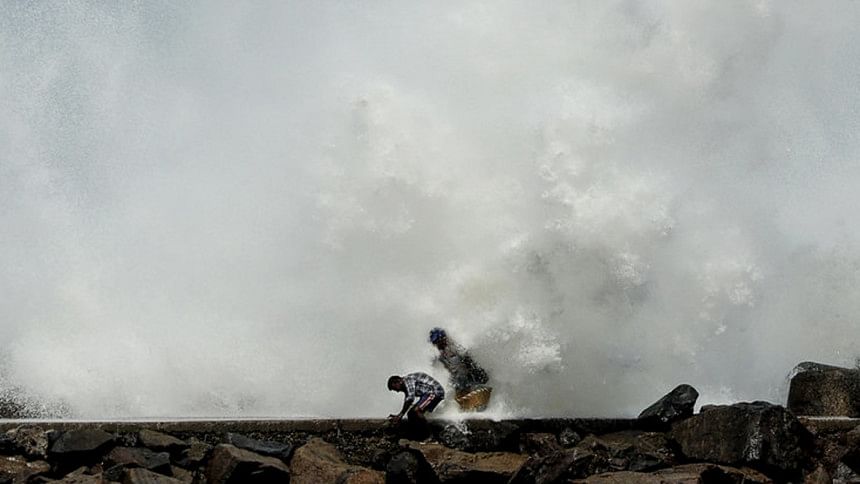Dealing with the triple emergency

In the last few weeks, the world has been having to deal with the double emergency of the pandemic as well as climate change, while Bangladesh and West Bengal had to deal with a triple emergency, with super cyclone Amphan hitting us quite badly. Unfortunately, such multiple emergencies are no longer going to be rare going forward. So we need to be that much better prepared to deal with them when they happen.
In the Bangladesh context, the good news was that we were able to track the projected pathway of the cyclone as it made its way slowly up the Bay of Bengal using multiple climate models, which proved reasonably accurate in terms of giving us sufficient warning. The latest warning updates were regularly being issued by the Bangladesh Meteorological Department and were widely understood by the NGOs and volunteers around the coastal areas, which enabled nearly 2.5 million people to be evacuated to cyclone shelters.
Obviously, it was extremely difficult to maintain social distancing guidelines in the cyclone shelters but nevertheless, people did their best. This combined effort of the relevant government agencies, Red Crescent volunteers and NGOs resulted in minimising the loss of lives to a few dozen, instead of the many tens of thousands we would have had in decades past.
There was similar success in warning and evacuation in India that minimised their loss of human lives as well, but since the cyclone hit Odisha and West Bengal first, their number of deaths was higher than ours.
However, despite the successful prevention of deaths, there was nevertheless a great deal of damage from the winds, rains and tidal surge that led to loss of trees, crops, houses and infrastructure such as roads and embankments. The overtopping and breach of many coastal embankments meant people were displaced and crops were lost to saline water. The costs are estimated at many billions of US dollars.
From the perspective of Bangladesh, there were two silver linings with respect to the final path of super cyclone Amphan. The first is that after hitting India, it hit the Sundarbans before reaching human habitations, and hence lost most of its force by then, although there was considerable loss to the flora and fauna of the forest. The second positive was that the Rohingya camps in Cox's Bazar were spared the worst, as the huts in the camps would have been unable to cope with very high wind speeds. While there was severe rainfall and some potential landslides, these were minimised by good preparation.
So while Bangladesh and West Bengal have made major improvements in their respective cyclone warning and evacuation systems that prevented the loss of human lives, there was still considerable damage to people's homes and livelihoods, which becomes even more acute while we are tackling Covid-19 and its economic downturn at the same time. What should be the next phase of our recovery plans at the national, regional as well as global levels?
At the national level, we must immediately develop a short term recovery plan with our own financial resources, as well as from the global community. The recovery plan should aim to tackle humanitarian, development and economic concerns, as well as public health and environmental considerations at the same time. This will require some holistic thinking and planning, involving not just the usual ministries of the government, but also experts from different disciplines in NGOs, universities and think tanks of the country. The good news is that these discussions are taking place every day and hopefully will result in a whole-of-society approach to the recovery.
At the regional level, we should recognise that the Sundarbans mangrove forest has once again played a major role in protecting both Bangladesh as well as West Bengal, and we should join forces to ensure that we are better at protecting the flora, fauna and also the people who live in it, on both sides of the border between the two countries. Joining forces to protect the Sundarbans, which is a world heritage site, will not only pay dividends for ourselves, but also be of benefit to the whole world.
Finally, at the global level, we have recently received news that the 26th annual Conference of Parties (COP26) of the United Nations Framework Convention on Climate Change (UNFCCC) will now be held in November 2021 in Glasgow, Scotland, under the presidency of the United Kingdom. As Bangladesh will be chairing the Climate Vulnerable Forum (CVF), we will have an opportunity to speak there, not just on our own behalf, but for all the most vulnerable developing countries. We should use this opportunity well.
One thing that the super cyclone has made absolutely clear is that loss and damage from human-induced climate change is now a grim reality and can no longer be avoided, so at COP26, we must push for a financial mechanism to provide funding for this loss and damage that goes beyond insurance. This will require doing our homework well before the event and the example of Amphan will be extremely relevant in such analyses.
We now need to think beyond single emergencies such as a cyclone, flood or even a pandemic. We need to see them as linked and have our preparedness systems and recovery systems linked up as well, and ready to be mobilised at short notice. Better preparedness has proven time and again to be the most effective in minimising the damage from such emergencies.
Saleemul Huq is Director of the International Centre for Climate Change and Development at the Independent University Bangladesh.

 For all latest news, follow The Daily Star's Google News channel.
For all latest news, follow The Daily Star's Google News channel. 



Comments